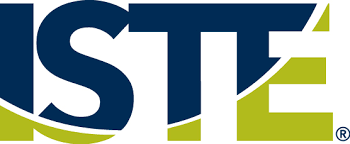Goals
The ISTE Standards for Students, as a document, is of the most thoroughly articulated models for what we should hope to achieve with technology in our classrooms. During 2019, I’d like to take a look at the Standards and discuss some of the practical ways teachers can begin to put the standards into practice.
A brief background before we begin
 The ISTE Standards for Students are comprised of 7 broad standards, each with a two-word title. Each standard includes indicators, which can be seen as a further fleshing-out of each broad standard. Moreover, if you access the standards via the link provided above, you have the option to hover over a few of the key words and phrases to get an even more detailed description of the indicator. It’s up to teachers to determine how these standards and indicators actually play out in real life in their classrooms.
The ISTE Standards for Students are comprised of 7 broad standards, each with a two-word title. Each standard includes indicators, which can be seen as a further fleshing-out of each broad standard. Moreover, if you access the standards via the link provided above, you have the option to hover over a few of the key words and phrases to get an even more detailed description of the indicator. It’s up to teachers to determine how these standards and indicators actually play out in real life in their classrooms.
Indicator 1a, Part 1
For this reason, I’d like to help bridge the gap between these amazing standards and what it could actually look like in our classrooms. Let’s begin with the very first clause of the very first indicator of the very first standard, Empowered Learner:
1a Students articulate and set personal learning goals,
It is essential for every classroom in the learner-centered era to be guided by student goals. And, as we all know, there’s a difference between students merely writing goals and students actually having goals. The former is to be avoided, the latter is ideal–but the latter is also a consequence of the culture of the classroom in which a student finds themself. Students in a teacher-centered, teacher-dependent classroom will not ever be able to adequately articulate their own learning goals. In all honesty, students’ inability to adequately set learning goals could be an indicator, itself, of the fact that the classroom is not student-centered no matter how much we say or believe it is.
Students in a 21st century learning environment should have goals, and their goals should guide the learning progress. When we reinforce student goal setting by promptly filing them away in a crate at the front of the room, it’s no wonder they find setting goals an irrelevant hoop they need to jump through.
How can we foster a healthy attitude toward goals in our classroom, and what does technology have anything to do with this?
- Students need to be taught how to write goals. Learners do not inherently know how to set goals. And since goals in our classrooms should be content-specific, learners with inherently little knowledge about the expected outcomes will have little to say about what their target ought to be. Students need guidance in where they need to be, what they should know. They need to learn how to set goals that are attainable, have a time frame in mind, and that can be broken down into achievable sub-tasks. For some students, setting SMART goals is achievable. For some, introducing them to the concept of WOOP can be an enlightening experience for them. Technology can help students access information about these frameworks, and even explore even more ways and philosophies surrounding the practice of setting goals.
 Writing goals involves ongoing conversation. Learners need to have the time, space, and expert facilitation to discuss their goals orally, in writing, and the conversation needs to remain open. We can not expect students “to sit down for the next 10 minutes and write down your goals for this semester” when they have had no preparation and no time to delve into what real goals for this content actually look like. Discussion of goals can take place on a Google Doc, in a discussion forum in Google Classroom or Moodle, or one-on-one, recorded via Screencastify and uploaded as an artifact to an ePortfolio.
Writing goals involves ongoing conversation. Learners need to have the time, space, and expert facilitation to discuss their goals orally, in writing, and the conversation needs to remain open. We can not expect students “to sit down for the next 10 minutes and write down your goals for this semester” when they have had no preparation and no time to delve into what real goals for this content actually look like. Discussion of goals can take place on a Google Doc, in a discussion forum in Google Classroom or Moodle, or one-on-one, recorded via Screencastify and uploaded as an artifact to an ePortfolio.- We should encourage students to set goals that are personal. Even though students might need guidance in what their goals should look like, their goals should be unique to their own person. Goals should take into account their strengths and weaknesses, but allow them to push beyond their own perceived limitations. Students should be allowed to display, advertise, and present their goals in a way that they wish. Online technology can provide several outlets for this articulation, whether they present their goals to the class via Google Slides or Prezi, use a photo-editing app or banner creation site like Canva to display their goal on a background of their choice, or create a poster on paper to hang on the wall displaying their goal (although this particular strategy may prove difficult to mesh with the final suggestion below).
- Students should use technology to keep the goals they set at the fore. This could involve having students set events in their Google Calendar or Google Keep to remind them of steps they need to take toward their goals. Or, students could use their goals to create ePortfolios that they visit as a regular part of every day of class to add or curate artifacts of their learning progress toward their goals. This involves creating habits, revisiting, and self-reflection, all of which can be fostered with an online platform like Mahara and its journaling capabilities.
- Students should use technology to revise their goals. Just as goals should not be filed away, students should also have the opportunity to revise their goals. Revisiting them often can help students recognize that their goals may need to be revised, and the more accessible they are from a logistical standpoint, the more likely this is to occur. The best way to do this is with online technology, using a tool that allows the goal to be presentable, but always editable.
Final Words
As you can see from some of the suggestions above, technology integration is more about teaching and learning than it is about technology. The practice of setting goals has little to do, on its own, with the presence of technology. However, technology can provide avenues for these goals to be played out. With technology, we can write better goals, articulate our goals better, revisit and revise our goals, and track our progress toward our goals in a much more efficient manner, meaning we can achieve our goals in a far more realistic sense and achieve far more than we knew we were capable. Removing technology will inevitably restrict the scope of opportunities for students. As we continue through the ISTE Standards for Students, it is our hope that you will increasingly find that this is the case. For as much as technology can add to the dizzying of society and the distraction of students, harnessing its power can open doors innumerable for each and every child, to places they never would have otherwise been.


 Writing goals involves ongoing conversation. Learners need to have the time, space, and expert facilitation to discuss their goals orally, in writing, and the conversation needs to remain open. We can not expect students “to sit down for the next 10 minutes and write down your goals for this semester” when they have had no preparation and no time to delve into what real goals for this content actually look like. Discussion of goals can take place on a Google Doc, in a discussion forum in Google Classroom or Moodle, or one-on-one, recorded via
Writing goals involves ongoing conversation. Learners need to have the time, space, and expert facilitation to discuss their goals orally, in writing, and the conversation needs to remain open. We can not expect students “to sit down for the next 10 minutes and write down your goals for this semester” when they have had no preparation and no time to delve into what real goals for this content actually look like. Discussion of goals can take place on a Google Doc, in a discussion forum in Google Classroom or Moodle, or one-on-one, recorded via